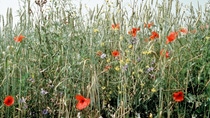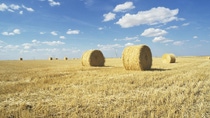Agriculture
Canola
Canola seed (oilseed rape) is crushed for food and non-food uses such as edible oil, renewable biofuels and lubricants. The residue is sold as canola meal, providing high-energy animal feed. Canola is a major crop for Canada, Australia, China, India and Europe. It is also increasingly cultivated in areas of the U.S. Canola plays a vital role in crop rotation as a break crop and is grown in fields to interrupt the repeated sowing of cereals. Without canola, the production of other crops and cereals could be substantially impacted.

Weeds are highly competitive with canola, and can use up resources – moisture, nutrients, access to sunlight – that would otherwise be available to the crop. Weeds like cleaver, similar to canola in size and shape, can contaminate the harvest by being mistakenly picked. Therefore, good weed control early in the growth season requires an integrated and consistent management strategy for canola. The use of high-yielding canola varieties – bred using genetic modification to be herbicide-tolerant (HT) – and in conjunction with broad spectrum herbicides offer the most powerful means of weed control.
The only broad spectrum herbicides that can be used with HT canola crops today are Glufosinate-ammonium and Glyphosate. Until recently, only Glyphosate-tolerant canola was available. Insufficient rotation of the herbicidal modes of action in the past has resulted in many weeds in vital canola growing regions no longer responding to Glyphosate treatment. As such, farmers are increasingly aware of the need to rotate their use of Glyphosate with Glufosinate-ammonium to mitigate weed resistance.

Did you know?
- With more than 11 million tonnes of canola produced, China ranks among the biggest world producers, followed by Canada, India, and Germany.
- Canola (“Can” for Canada and “ola” for oil low acid) has a very low level of saturated fat – 7% or below. It was developed by Canadian plant breeders by removing the anti-nutritional components from rapeseed.







